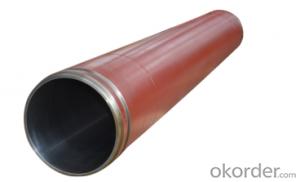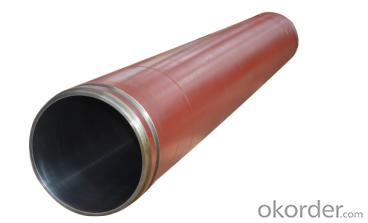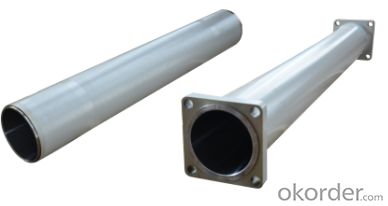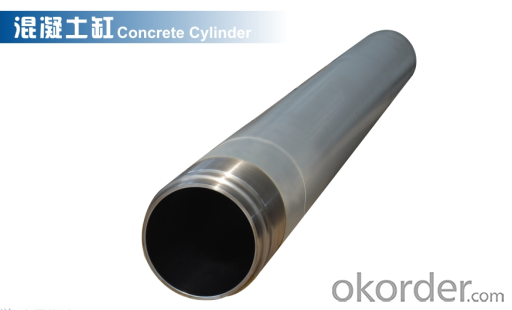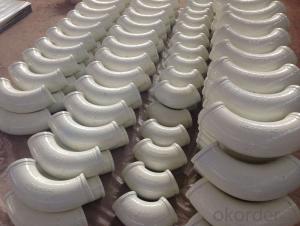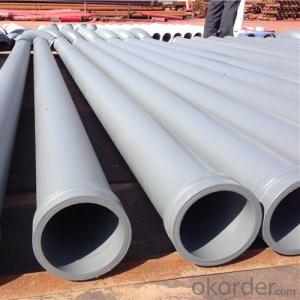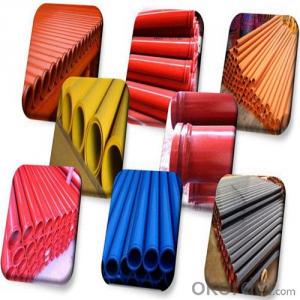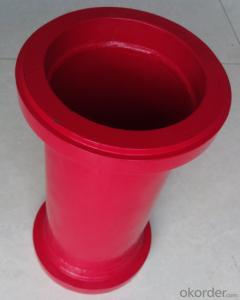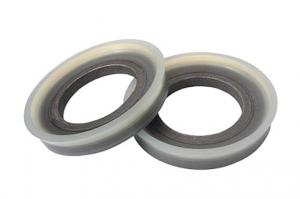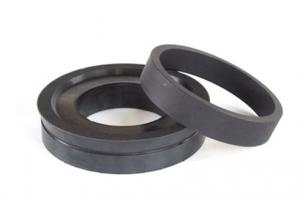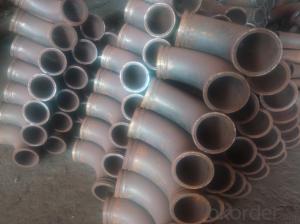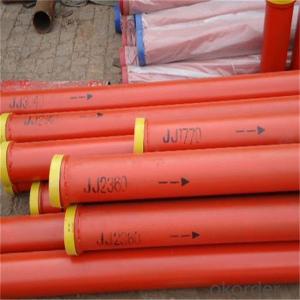DELIVERY CYLINDER(SCHWING ) I.D.:DN230 CR. THICKNESS :0.25MM-0.3MM COLOR:WHITE LENGTH:2125MM
- Loading Port:
- Shanghai
- Payment Terms:
- TT OR LC
- Min Order Qty:
- 2 pc
- Supply Capability:
- 1000 pc/month
OKorder Service Pledge
Quality Product, Order Online Tracking, Timely Delivery
OKorder Financial Service
Credit Rating, Credit Services, Credit Purchasing
You Might Also Like
Packaging & Delivery
| Packaging Detail: | wooden case, seaworthy packing |
| Delivery Detail: | 15 days |
Specifications
Concrete Pump Delivery Cylinder DN230*2100
1. Capacity: 60,000~80,000cbm
2. Size: DN180, DN200, DN230..
4. Brand: PM, Sany,ZM
Concrete Pump Delivery Cylinder DN230*2100
1. Material: C45
2. quenching and tempering to improve the hardness to HB241-280
3. inner wall chrome thickness is 0.25-0.30mm, hardness HV820-900.
4. Brand: SCHWING, PM, SANY, KYOKUTO, CIFA
5. Capacity: 60,000~80,000cbm
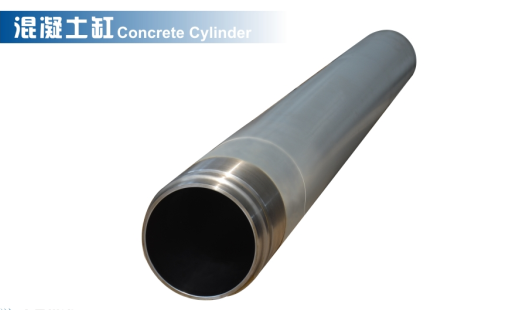
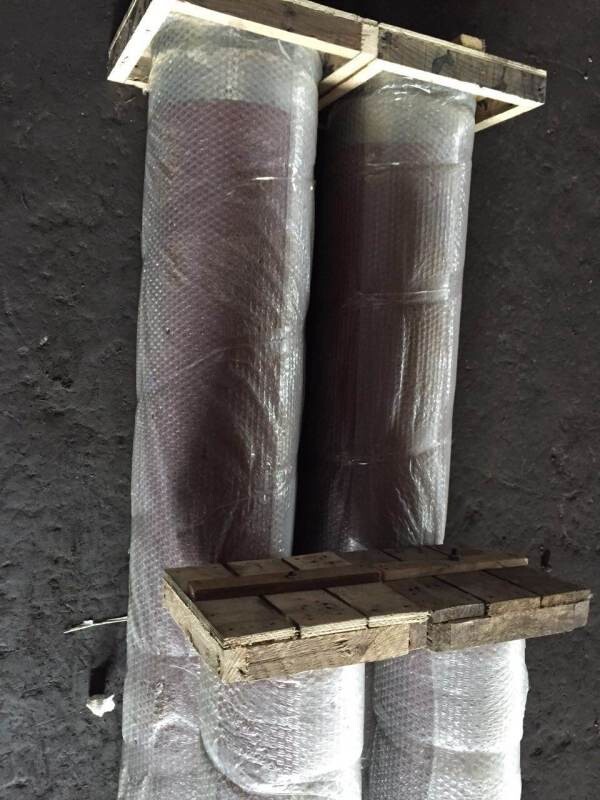
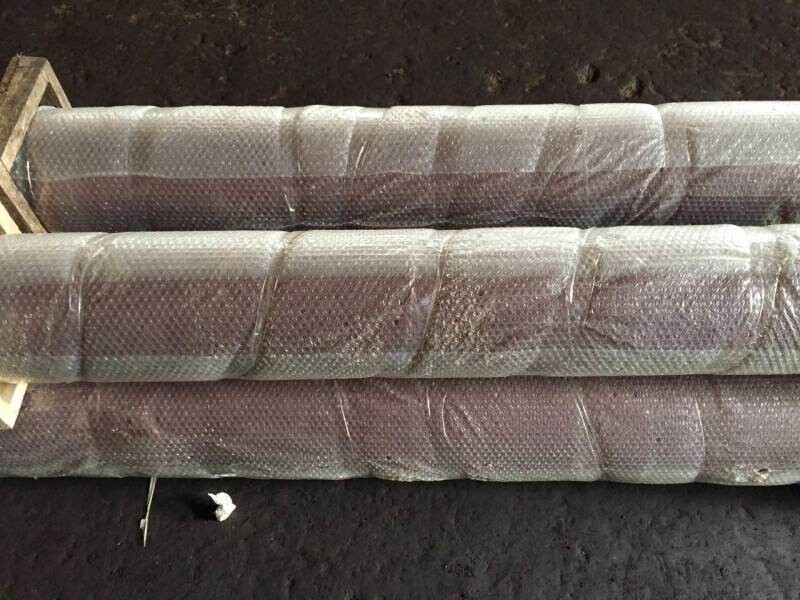
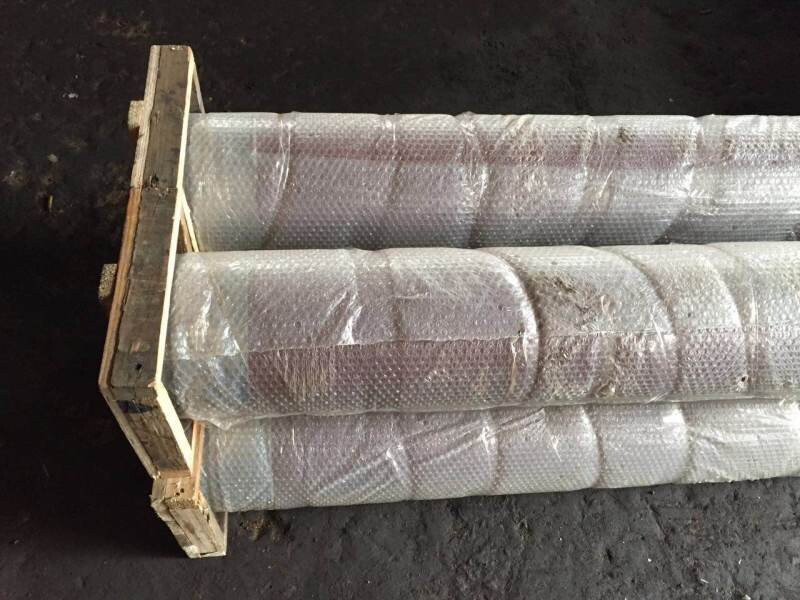

- Q: How often should concrete pump agitator motors be inspected and replaced?
- Concrete pump agitator motors should be inspected regularly, ideally every six months, to ensure they are in proper working condition. However, the frequency of replacement depends on various factors such as usage, maintenance, and the overall condition of the motor. If any signs of wear, malfunction, or decreased performance are observed, immediate replacement is recommended to prevent further damage and ensure the smooth operation of the concrete pump.
- Q: What is the function of a concrete pump hydraulic filter?
- The function of a concrete pump hydraulic filter is to remove contaminants and impurities from the hydraulic fluid that is responsible for operating the pump. The hydraulic filter is designed to capture particles such as dirt, debris, and metal fragments that may be present in the hydraulic system. By removing these contaminants, the filter ensures that the hydraulic fluid remains clean and free from any potential damage-causing particles. This helps to maintain the overall performance and longevity of the concrete pump by preventing clogs, wear and tear, and potential damage to the pump's hydraulic components. Additionally, a clean hydraulic system reduces the risk of hydraulic fluid leakage, which can lead to costly repairs and downtime. Therefore, the concrete pump hydraulic filter plays a critical role in ensuring the efficiency, reliability, and durability of the pump's hydraulic system.
- Q: What are the signs of a malfunctioning lubrication system?
- There are various indications that may suggest a malfunctioning lubrication system. Firstly, the occurrence of uncommon engine noises such as grinding or squealing could imply that the moving parts are not receiving adequate lubrication. Furthermore, a decrease in engine performance or a loss of power might be attributable to insufficient lubrication. Another telltale sign is the presence of oil leaks, which may indicate issues with the seals or gaskets of the lubrication system. In the event that you detect a burning smell or observe smoke emanating from the engine, it could signify oil leakage onto hot engine components. Lastly, it is crucial to regularly monitor the oil pressure gauge, as a faulty lubrication system can result in low oil pressure that, if not promptly addressed, can lead to engine damage. In conclusion, it is imperative to remain vigilant of these indicators and promptly address any potential lubrication system problems to ensure the proper functioning and durability of your engine.
- Q: Can I get spare parts for both concrete pumps with and without agitators?
- Yes, you can get spare parts for both types of concrete pumps - those with agitators and those without. Many manufacturers and suppliers of concrete pumps offer a wide range of spare parts to ensure the smooth operation and maintenance of these machines. These spare parts include but are not limited to wear plates, cutting rings, delivery cylinders, pistons, seals, hoses, valves, and filters. It is recommended to contact the manufacturer or authorized dealers of the specific concrete pump brand you are using to inquire about the availability and pricing of spare parts for both types of pumps.
- Q: What is the purpose of a concrete pump remote control battery?
- The primary function of a battery for a concrete pump remote control is to supply power and mobility to the remote control device that operates the concrete pump. By using the remote control, the operator can conveniently control the movements and functions of the concrete pump from a distance, eliminating the need to physically be at the pump location. The battery provides the required electrical energy to the remote control, enabling it to transmit wireless signals and commands to the concrete pump. This grants the operator the freedom to move around the construction site while still maintaining complete control over the concrete pump. Additionally, the battery ensures uninterrupted operation of the remote control, guaranteeing efficient and precise control over the concrete pump's functions.
- Q: How long does it take to receive concrete pump spare parts after placing an order?
- The delivery time for concrete pump spare parts can differ depending on various factors. Firstly, it relies on the availability of the specific spare parts you have ordered. If the parts are readily in stock, the delivery time can be relatively fast. However, if the parts need to be manufactured or sourced because they are not in stock, it may take longer to receive them. Secondly, the distance between the supplier and your location also plays a role in the delivery time. If the supplier is nearby, the parts can be delivered within a few days. However, if the supplier is far away or in a different country, it may take longer due to shipping and customs procedures. Moreover, the delivery time can also be influenced by the shipping method you choose. Expedited shipping options can ensure quicker delivery but at an additional cost. On the other hand, standard shipping methods may take longer but are usually more cost-effective. Lastly, the efficiency and responsiveness of the supplier also factor into the equation. A reliable supplier with a streamlined ordering and shipping process will likely be able to deliver the spare parts more quickly. To sum up, the time it takes to receive concrete pump spare parts after placing an order can vary based on factors such as availability, distance, shipping method, and supplier efficiency. It is advisable to inquire about estimated delivery times when placing the order to gain a better understanding of when the parts will be delivered.
- Q: What is the first generation pumping technology of concrete pump?
- The failure rate and maintenance cost are very high, and it is easy to delay the progress of the project
- Q: What are the different types of concrete pump clamps?
- Concrete pump clamps come in various types, each serving a specific purpose and accommodating different pump sizes. Some commonly used clamps are as follows: 1. Snap clamps: These clamps utilize a snap mechanism, making them easy to install and remove. They are suitable for securing smaller diameter hoses and pipes. 2. Bolt clamps: Offering a stronger grip, bolt clamps consist of a metal band with bolts that can be tightened to hold the hose or pipe firmly in place. They are typically used for larger diameter hoses and pipes. 3. Wedge clamps: Wedge clamps use a wedge device to firmly secure the hose or pipe. They are commonly employed in high-pressure applications or when working with heavy-duty pumps. 4. Quick-release clamps: Designed for quick installation and removal, these clamps feature a lever or latch for easy adjustment. They are ideal for situations requiring frequent hose or pipe changes. 5. Flanged clamps: Specifically designed for pipes with flanges, these clamps establish a tight and secure connection between the pump and the pipe, preventing leaks or disconnections. To ensure the appropriate clamp selection, consider the specific requirements of your project, such as pump size, hose or pipe diameter, and expected pressure. Seeking guidance from a professional or supplier will assist you in choosing the suitable clamp for your needs.
- Q: What is the purpose of a concrete pump hydraulic oil cooler?
- The primary function of a concrete pump hydraulic oil cooler is to keep the hydraulic oil in the system at the ideal temperature. The hydraulic oil powers the hydraulic system of the pump, which is responsible for operating different components like pistons, cylinders, and valves. While the pumping process is ongoing, the constant movement and pressure can cause the hydraulic oil to heat up. If the oil gets too hot, its viscosity decreases, which negatively impacts the overall efficiency and performance of the pump. Additionally, excessive heat can cause the hydraulic oil to deteriorate and break down, resulting in increased wear and tear on the pump's components. To prevent these problems, a concrete pump hydraulic oil cooler is utilized. It typically functions as a heat exchanger, transferring heat from the hydraulic oil to a cooling medium like air or water. This helps regulate the temperature of the hydraulic oil and keeps it within a safe operating range. By maintaining the optimal temperature, the hydraulic oil cooler guarantees that the hydraulic system functions efficiently and effectively. It also helps extend the pump's lifespan by reducing the risk of overheating and excessive component wear. Moreover, it preserves the quality of the hydraulic oil, allowing it to retain its lubricating properties and prevent any potential harm to the system. In conclusion, the goal of a concrete pump hydraulic oil cooler is to control the temperature of the hydraulic oil to optimize the performance, efficiency, and longevity of the pump's hydraulic system.
- Q: Are there any regulatory requirements for the quality and standards of concrete pump spare parts?
- Yes, there are regulatory requirements for the quality and standards of concrete pump spare parts. These requirements ensure that the spare parts meet certain standards of safety, performance, and durability. Regulatory bodies, such as governmental agencies or industry associations, often establish these requirements to protect consumers and ensure the proper functioning of concrete pumps. Some of the common regulatory requirements for concrete pump spare parts include: 1. Certification: Spare parts may need to be certified by an authorized organization or undergo a specific testing process to demonstrate that they meet the required quality and performance standards. This certification helps ensure that the spare parts are safe and reliable. 2. Material Standards: There may be specific material standards that the spare parts must comply with. For example, the materials used in the construction of the spare parts may need to meet certain strength, corrosion resistance, or temperature resistance requirements. 3. Design and Manufacturing Standards: The design and manufacturing processes of the spare parts may need to adhere to certain standards. This includes guidelines on dimensions, tolerances, manufacturing techniques, and quality control procedures to ensure consistent and reliable performance. 4. Performance and Compatibility Standards: Spare parts should be designed and manufactured to perform within specific parameters and be compatible with the concrete pump system they are intended for. This ensures that the spare parts will function properly and safely when installed in the pump. 5. Documentation and Labeling: Regulatory requirements often mandate that spare parts come with proper documentation, including user manuals, installation instructions, and maintenance guidelines. Additionally, labeling requirements may be in place to clearly identify the spare parts and their specifications. It is important for manufacturers, suppliers, and users of concrete pump spare parts to be aware of and comply with these regulatory requirements to ensure the safety and effectiveness of the concrete pump system.
Send your message to us
DELIVERY CYLINDER(SCHWING ) I.D.:DN230 CR. THICKNESS :0.25MM-0.3MM COLOR:WHITE LENGTH:2125MM
- Loading Port:
- Shanghai
- Payment Terms:
- TT OR LC
- Min Order Qty:
- 2 pc
- Supply Capability:
- 1000 pc/month
OKorder Service Pledge
Quality Product, Order Online Tracking, Timely Delivery
OKorder Financial Service
Credit Rating, Credit Services, Credit Purchasing
Similar products
Hot products
Hot Searches
Related keywords
